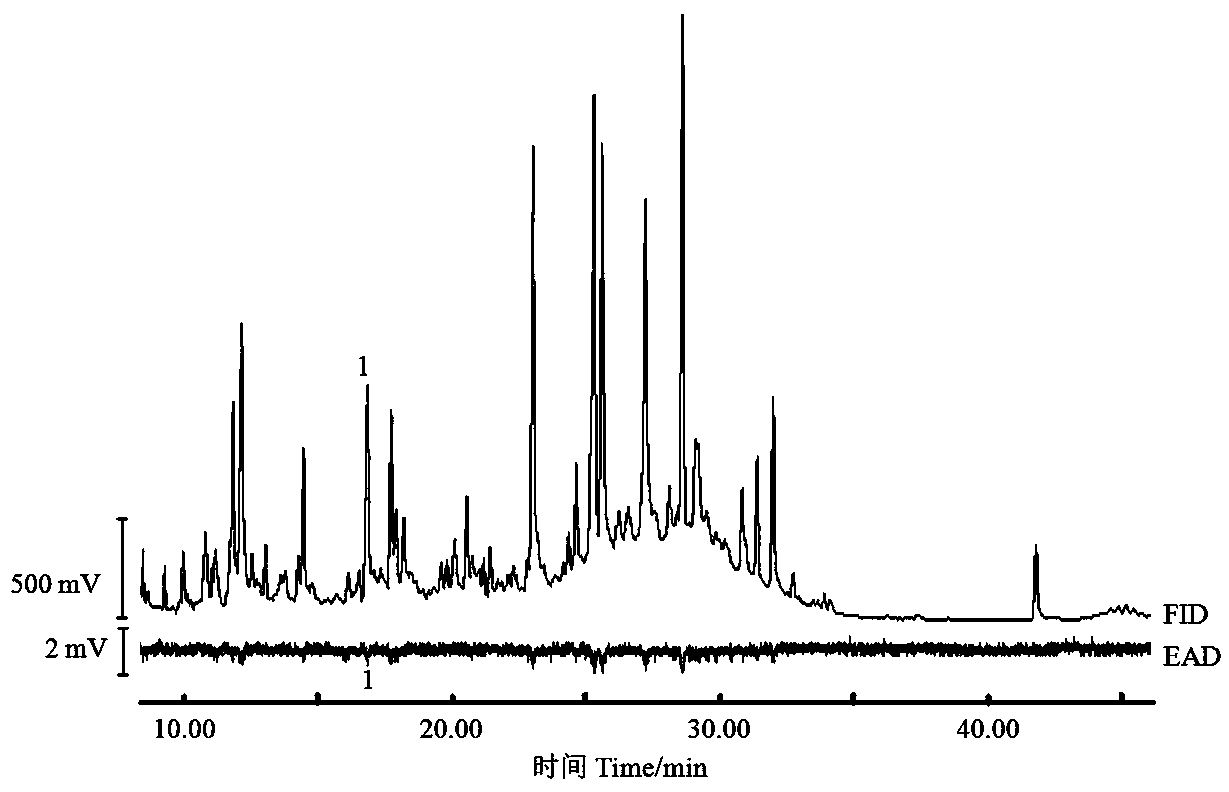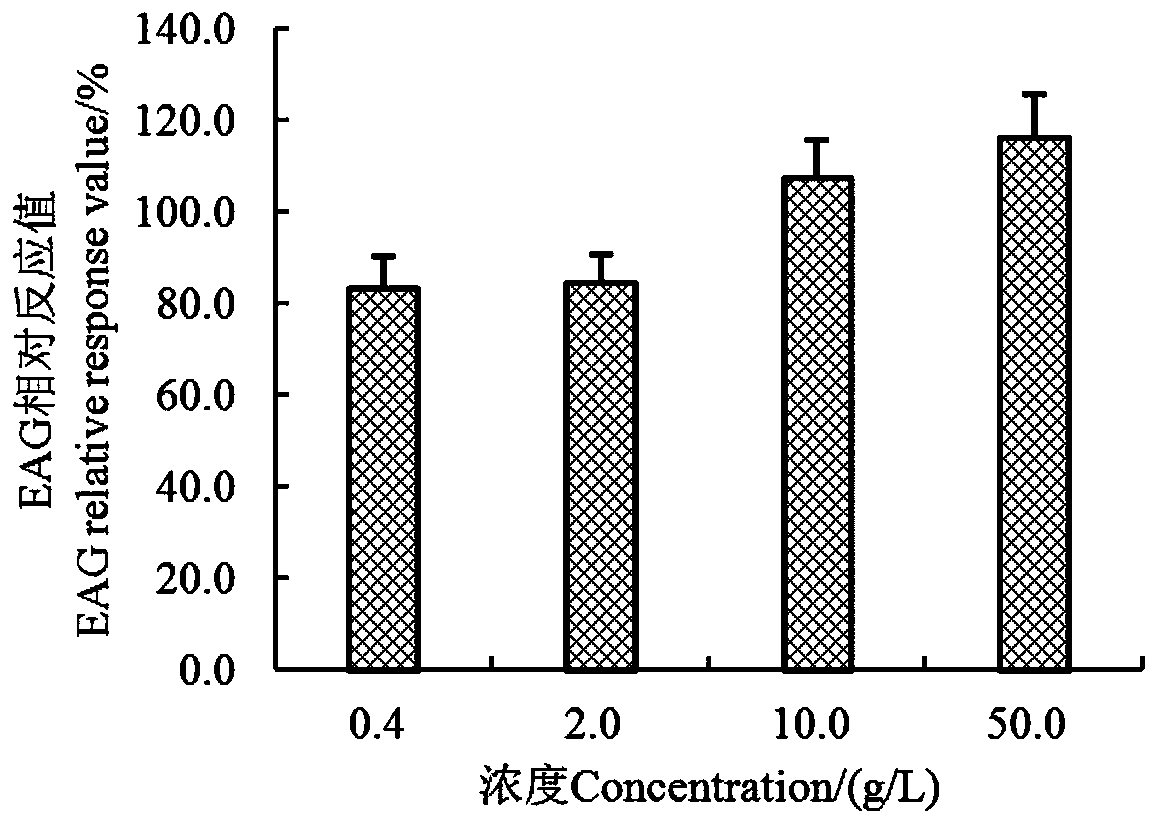Applications of 3,4-dimethylbenzaldehyde
A technology of dimethylbenzaldehyde and pest attractant, applied in the application field of 3,4-dimethylbenzaldehyde, can solve the problems of excessive pesticide residues in agricultural products and environmental pollution
- Summary
- Abstract
- Description
- Claims
- Application Information
AI Technical Summary
Problems solved by technology
Method used
Image
Examples
preparation example Construction
[0022] The preparation method of the pest attractant includes the preparation of mother liquid A, the preparation and preparation steps of auxiliary liquid B, specifically including:
[0023] A. Preparation of mother liquor A: Accurately weigh 3, 4-dimethylbenzaldehyde and add solvent to dissolve to prepare mother liquor A;
[0024] B. Preparation of auxiliary solution B: Prepare Tween-80 solution with deionized water to obtain auxiliary solution B;
[0025] C. Preparation: The mother liquid A and the auxiliary liquid B are mixed, then ultrasonically treated, and then constant volume is obtained to obtain the target pest attractant.
[0026] The solvent described in the A step is one or more of ethanol, n-hexane, methanol and methylene chloride.
[0027] The mass percent concentration of the Tween-80 solution described in the B step is 0.1%.
[0028] The ultrasonic treatment described in step C is ultrasonic treatment at an ultrasonic frequency of 40-60 KHz for 4-6 minutes. ...
Embodiment 1
[0036] Discovery of pest attractant substances
[0037] (1) Extraction and identification of volatile components
[0038] The volatile components of healthy and pest-free Chinese rose leaves were collected by headspace dynamic adsorption method, and the collected volatile components were stored in a -20°C refrigerator for GC-MS analysis. The adsorbent used in the collection process was Tenax TA, and the collection time was 24 hours to eliminate the influence of diurnal rate changes on the types and contents of volatile components.
[0039] (2) Feeding method of cotton bollworm
[0040] Put the collected mature larvae of cotton bollworm into a 250 mL beaker with moist sand and seal it with gauze. After pupation and eclosion, the adults were transferred to another 250 mL beaker. Supplement nutrition with 10% honey water, make them lay eggs and hatch on healthy Chinese rose leaves, and transfer them to finger tubes to raise single-headed larvae until mature (feeding conditions:...
Embodiment 2
[0049] EAG Response of Cotton Bollworm Adults to 3, 4-Dimethylbenzaldehyde
[0050] The antennae of the female moth holding eggs of cotton bollworm were cut off, and the two flagella at the end were removed, and then connected with the probe of the antenna potentiometer with conductive glue, and the antenna electrophysiology (EAG) test was performed. Take 20.0 μL of the sample solution to be tested (3, 4-dimethylbenzaldehyde-n-hexane solution) and apply it evenly on a filter paper strip (l × w = 6.0 × 0.5 cm), put it into a Pasteur tube, and connect it to a stimulating airflow superior. The flow rate of the stimulating airflow is 1150 mL / min, and the flow rate of the continuous airflow is 850 mL / min. After the baseline was stabilized, artificial stimulation was given with the pedal, and the single stimulation lasted for 0.2 s, with an interval of more than 60 s between each time. The sequence of samples to be tested in the same antennae was n-hexane (1 time), trans-2-hexenal...
PUM
 Login to View More
Login to View More Abstract
Description
Claims
Application Information
 Login to View More
Login to View More - R&D
- Intellectual Property
- Life Sciences
- Materials
- Tech Scout
- Unparalleled Data Quality
- Higher Quality Content
- 60% Fewer Hallucinations
Browse by: Latest US Patents, China's latest patents, Technical Efficacy Thesaurus, Application Domain, Technology Topic, Popular Technical Reports.
© 2025 PatSnap. All rights reserved.Legal|Privacy policy|Modern Slavery Act Transparency Statement|Sitemap|About US| Contact US: help@patsnap.com



